Introduction to the Port
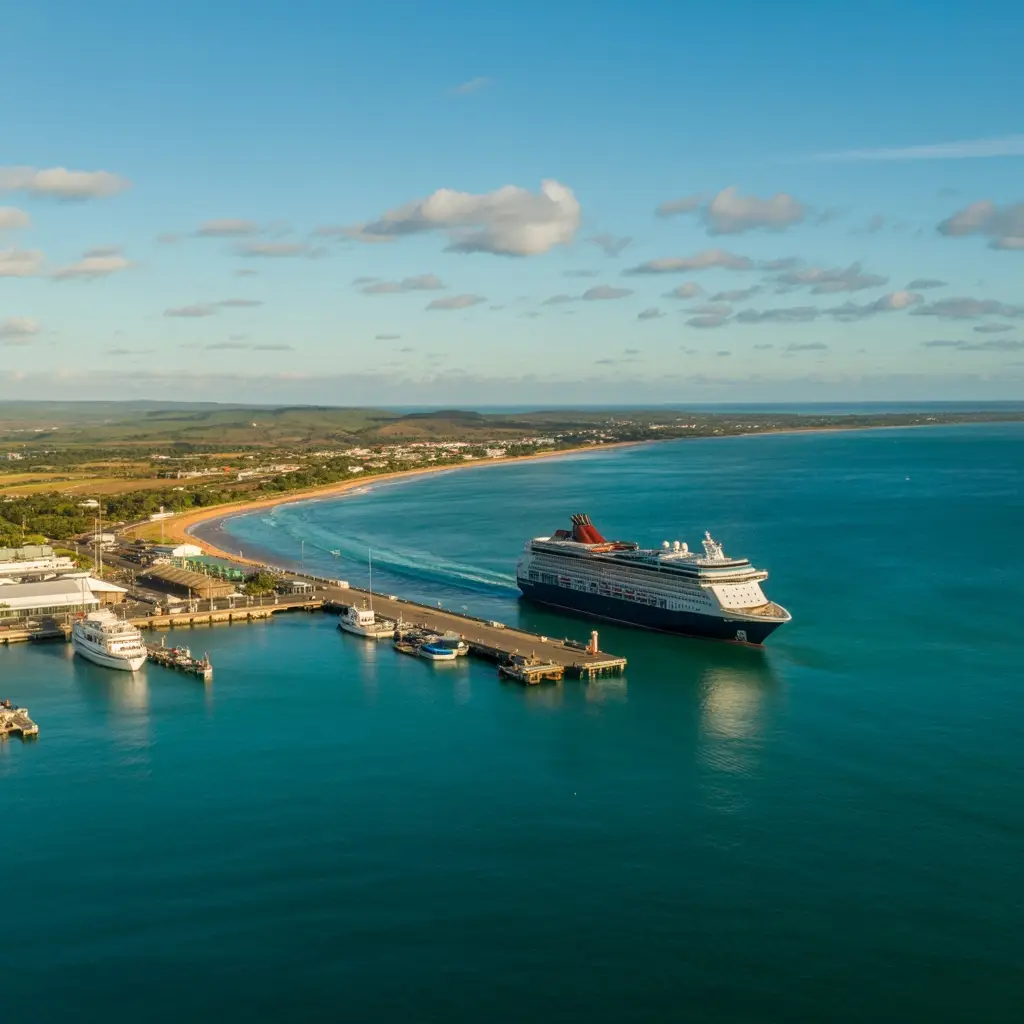
Envision this: you’re sailing into Inhambane Bay, where palm-fringed beaches stretch as far as the eye can see, and the gentle lapping of waves against your hull creates that perfect soundtrack for paradise.
For other Mozambique Cruise destinations check out our Mozambique Cruise Ship Port Guide page.
The scent of salt air mixes with something floral from the shore, probably those vibrant bougainvillea bushes that seem to cascade down every hillside. This isn’t your typical cruise port with concrete terminals and bustling crowds – instead, you’ll find yourself anchoring in crystal-clear waters that practically beg you to plunge right in, though those tidal currents might’ve other plans for your afternoon swim.
Now, before you get too swept away by the postcard scenery, let’s talk logistics because this slice of southern Mozambique requires a bit more planning than your average port call.
You’ll be dropping anchor rather than tying up to a fancy marina, and trust me, understanding those tidal patterns will save you from some seriously awkward moments when you’re trying to get back to your boat.
The good news is that nearby Maxixe town has supplies if you need them, and with the right prep work, this destination provides the kind of authentic, off-the-beaten-path adventure that makes for the best kind of travel stories.
Map of Inhambane Cruise Ship Port
Why Cruise From this Port?
Honestly, cruising from Inhambane gives you access to some of the most untouched marine encounters on the planet, plus you’ll dodge those massive tourist crowds that turn other African ports into floating parking lots.
- Proximity to world-class diving spots where manta rays and whale sharks hang out like they own the place
- Direct access to pristine Barra and Tofo beaches without the hassle of overland transfers
- Authentic cultural interactions with local communities who haven’t been turned into tourist attractions yet
- Strategic location for exploring mangrove ecosystems and spotting endangered dugongs
- Growing infrastructure investments that improve amenities while keeping the authentic charm intact
“What makes Inhambane special is that we’re perfectly positioned between incredible marine biodiversity and genuine cultural heritage sites, so cruise passengers can literally snorkel with whale sharks in the morning and explore 500-year-old trade route landmarks in the afternoon,” says Maria Santos, Port Development Coordinator for Inhambane Bay Tourism Authority.
Cruise Terminal(s) Overview
Look, I’m going to be straight with you about Inhambane’s cruise terminal situation because, well, calling it a “terminal” is kind of like calling my garage a luxury spa. The reality? This place operates more like a charming, slightly chaotic fishing port that happens to welcome cruise ships when they show up.
You won’t find those gleaming glass terminals with duty-free shops and overpriced coffee here. Instead, ships either anchor out in the bay and tender passengers to shore, or they squeeze into the main harbor right next to the local fishing dhows. It’s actually pretty cool if you think about it – you’re stepping off your cruise ship directly into authentic Mozambican life, with fishermen mending nets and locals going about their daily business.
The anchorage at Linga Linga Point becomes your best friend when the weather gets moody, especially during those southwestern gales that roll through between June and August. Trust me, you’d rather be safely anchored there than trying to dock in choppy waters next to a fleet of traditional boats.
| Terminal | Facilities | Distance to City Centre | Walkable | Luggage Storage | WiFi Availability |
|---|---|---|---|---|---|
| Main Harbor Dock | Basic restrooms, visa processing desk, shared commercial facilities | 0km (in city center) | Yes | No dedicated storage | No |
| Linga Linga Anchorage | Tender boats only, no shore facilities | 2km to town center | No (tender required) | No | No |
| Bazaruto Island Transfer Point | Basic amenities, boat transfer coordination | 45km north of Inhambane | No (boat transfer only) | Limited | Sporadic |
The truth is, this stripped-down approach actually works in Inhambane’s favor. Without all the commercial terminal nonsense, you’re literally stepping into the heart of this historic town within minutes. The museum, cathedral, and that bustling mercado market are all right there, practically waiting for you to stumble upon them. Just remember to bring patience and a sense of exploration – this isn’t Miami or Barcelona, and that’s exactly what makes it special.
Transport Options to the Port (From City Centre)
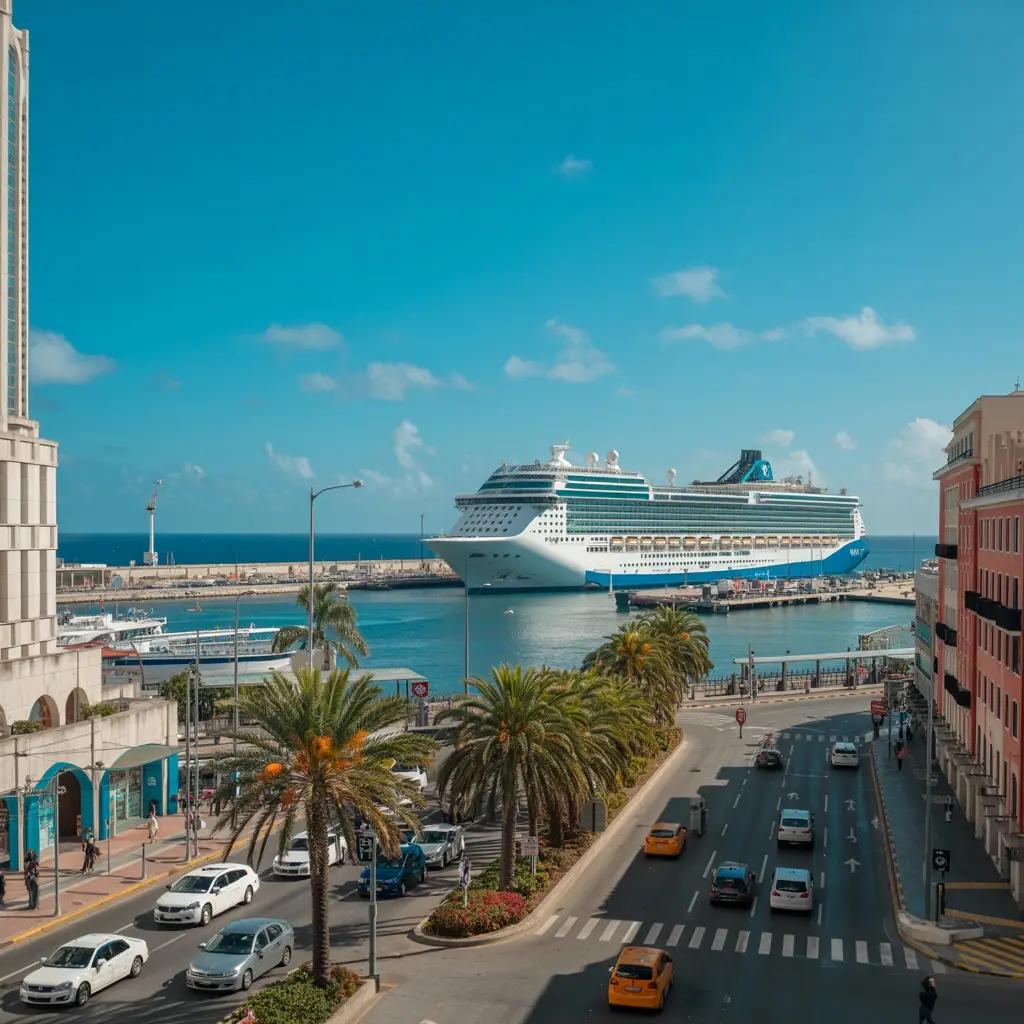
Getting around Inhambane to reach the port is invigoratingly simple, though you’ll want to budget somewhere between pocket change for local transport and a decent lunch for private transfers.
| Transport Option | Cost Estimate (€/$) | Travel Time | Frequency | How to Book/Use |
|---|---|---|---|---|
| Metered Taxi | $3-8 USD | 10-15 minutes | 24/7 availability | Flag down in city center or ask hotel |
| Local Chapas (Minibuses) | $0.75-1.50 USD | 20-30 minutes | Every 15-30 minutes | Board at Mercado Municipal hub |
| Walking | Free | 25-40 minutes | Always available | Follow Avenida da Marginal coastal road |
| Hotel Shuttle | Free (guests only) | 15-20 minutes | Scheduled times | Book 24-48 hours in advance |
| Private Transfer | $15-25 USD | 10-15 minutes | By appointment | Pre-book via Inhambane Tours or similar |
How to Get from the Airport to the Cruise Port
Getting from Inhambane Airport to the cruise port requires a bit more planning than your typical city center jaunt, but honestly, the options are pretty straightforward once you know what you’re dealing with.
| Transport Option | Cost Estimate (€/$) | Travel Time | Capacity | How to Book/Use |
|---|---|---|---|---|
| Private Transfer (Standard) | $186 USD | 3h 50m | 1-7 passengers | Pre-book via Viator, TripAdvisor, or AAA portals |
| Private Transfer (Minibus) | $200-250 USD | 3h 50m | 8-15 passengers | Same booking platforms, specify group size |
| Round-trip Airport Transfer | $125 USD | 25m to city + port transfer | 1-7 passengers | Book combined service for better value |
| Rental Car | $40-60/day + fuel | 3h 30m-4h | Varies by vehicle | Major rental agencies at airport |
| Taxi + Chapa Combo | $40-60 USD total | 4-5 hours | 1-4 passengers | Negotiate with airport taxi, then local transport |
Parking and Accessibility at the Port
Parking at Inhambane’s cruise port is pleasantly simple compared to other ports where you’re basically paying a small fortune to park your car in what feels like another zip code.
- Valet parking – Available right at the luggage drop-off zones, so you can literally hand over your keys and walk straight into the terminal.
- Self-service parking – Located near the terminal with complimentary shuttle buses running back and forth.
- Insurance included – Park&Cruise packages come with coverage, which honestly takes a load off your mind.
- Pay on the ship – Parking fees get charged directly to your onboard account, so no fumbling for cash or cards at checkout.
- Private transfers available – If you’d rather skip parking altogether, transfers from places like Pomene Cruise Port run about $70 per vehicle.
- Baggage assistance – Staff will help you with your luggage during the parking process, because dragging three suitcases across a parking lot is nobody’s idea of a vacation start.
Common Mistakes First‑Time Cruisers Make at the port
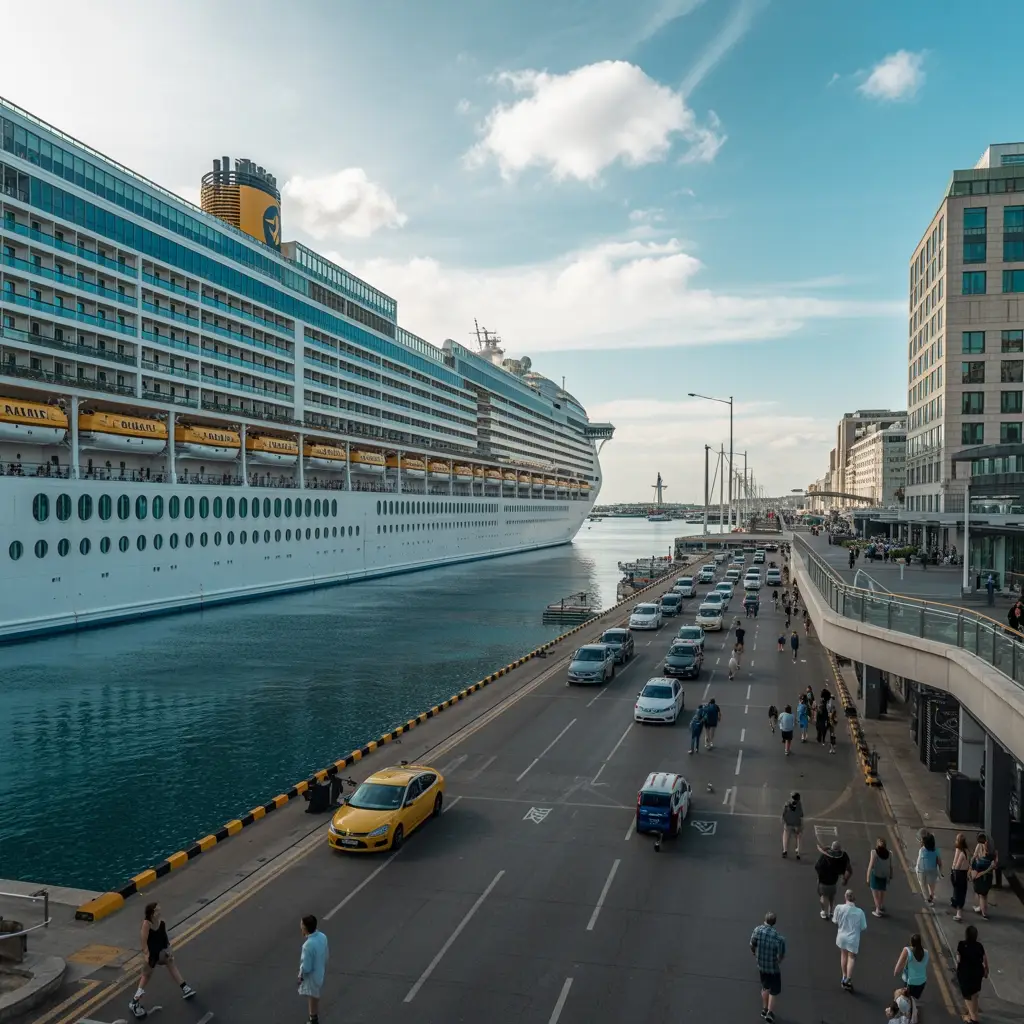
First-time cruisers at Inhambane often make preventable mistakes that can turn an exciting port day into a stressful scramble back to the ship.
- Forgetting cash for local markets – ATMs are scarce here, and most vendors only accept Mozambican meticais, not USD or credit cards.
- Not checking the all-aboard time – It’s usually 30 minutes before departure, but double-check because missing the ship in a remote port like this isn’t fun.
- Skipping mosquito protection – This is malaria country, so bring repellent and long sleeves for evening activities.
- Booking random tour operators – Stick with cruise-approved excursions or well-reviewed local companies, because getting stranded with sketchy operators happens.
- Ignoring cultural dress codes – Cover shoulders and knees when visiting local communities or religious sites.
- Leaving without emergency contacts – Save the port agent’s number and your ship’s local contact info in your phone before heading out.
- Not researching local scams – Friendly locals presenting “special deals” on tours or souvenirs often target cruise passengers with inflated prices.
Things to do Near The Port
Inhambane port puts you right in the heart of one of Mozambique’s most charming coastal towns, where colonial architecture meets vibrant local culture just steps from where your ship docks.
- Inhambane Cathedral (Cathedral of Nossa Senhora do Bom Conselho) – This 19th-century Portuguese beauty sits about 10 minutes from the port and showcases stunning colonial-era stonework.
- Mercado Central – The bustling central market where you can haggle for handwoven baskets, colorful capulanas, and aromatic spices while dodging friendly vendors.
- São Sebastião Fort ruins – What’s left of this 16th-century Portuguese military outpost provides great harbor views and a quick history lesson.
- Inhambane Estuary waterfront – Perfect for dolphin spotting tours or dhow sailing trips that launch right from the town’s edge.
- Colonial architecture walking tour – Wander the old town’s tree-lined streets to admire Portuguese-era buildings, many still housing local businesses and cafes.
- Local craft workshops – Visit Makua and Tsonga artisans who’ll show you traditional pottery and weaving techniques in their neighborhood studios.
See what’s on offer from the Port of Ilha de Moçambique for a different Mozambique Cruise destination.
Short Walks Close to the Port
The beauty of Inhambane is that everything feels wonderfully walkable, with cobblestone streets and shady pathways leading you through centuries of history without breaking a sweat.
| Walk Name | Start Point | Distance | Time Needed | Highlights |
|---|---|---|---|---|
| Harbor Dhow Watching Loop | Cruise terminal | 1.2 km | 30 minutes | Traditional sailing boats gliding into port, local fishermen mending nets, waterfront cafes perfect for people-watching |
| Old Town Heritage Trail | Port entrance | 800 m | 45 minutes | Portuguese cathedral with rusty ladder to spire, historic mosque, colonial museum tucked between narrow alleyways |
| Mercado Market Stroll | Main port road | 600 m | 25 minutes | Colorful spice stalls, cashew vendors, fresh seafood displays, and that wonderful chaos only African markets can deliver |
| Tofu Beach Pathway | Eastern harbor edge | 1.8 km | 20 minutes | Pristine coastline leading to whale shark diving spots, though December through April gives you the best marine life viewing |
Dining and Shops Within Walking Distance of the Port
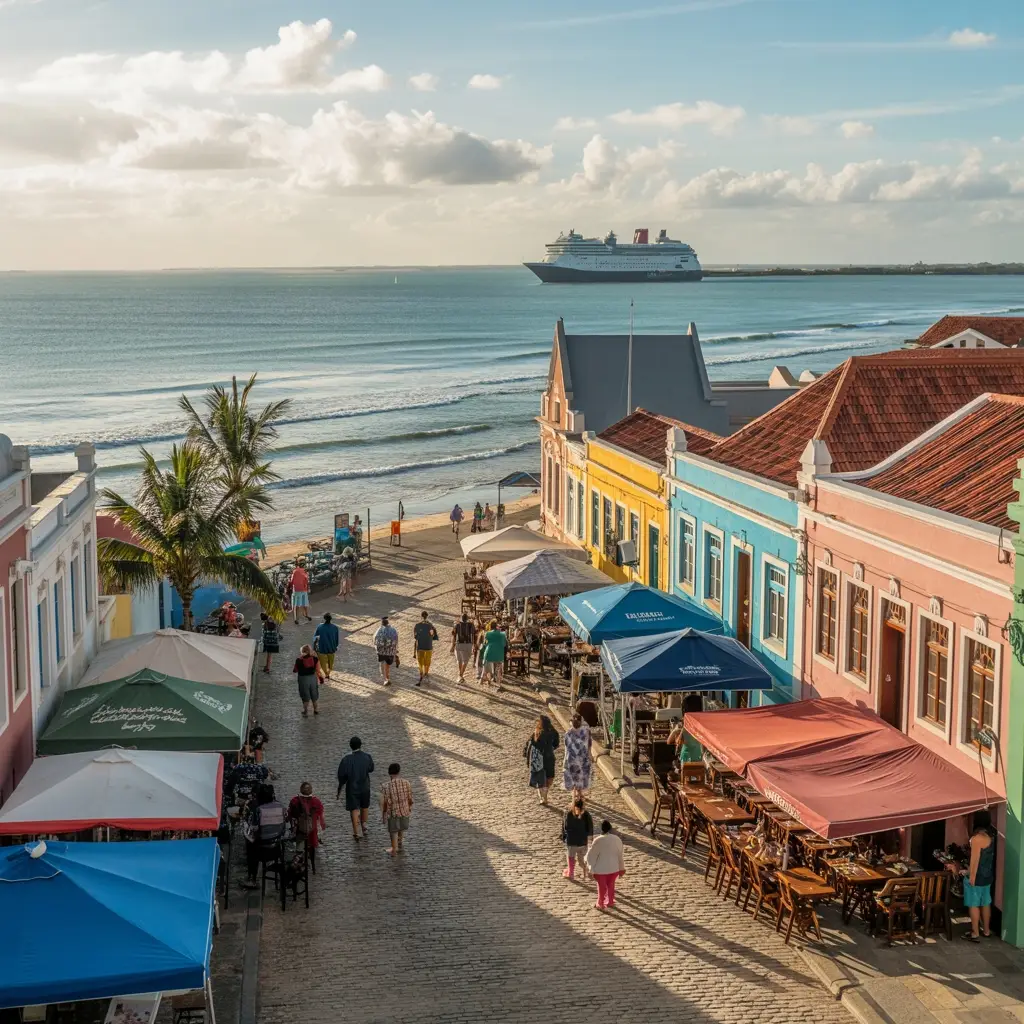
Within a comfortable stroll from where your ship docks, you’ll uncover everything from spicy peri-peri chicken that might make you question your spice tolerance to souvenirs that actually look good in your living room.
- Inhambane Market – Just 600 meters away on that same market stroll route, where fresh produce mingles with handmade crafts and the organized chaos somehow makes perfect sense.
- Stop Snack Bar – Affordable Mozambican street food in nearby Maxixe, because sometimes you want authentic flavors without the fancy tablecloth encounter.
- Hoya Hoya Restaurante – Traditional peri-peri chicken and cassava that’ll give you a proper taste of local flavors, assuming you can handle the heat.
- Natureza – Curated souvenirs including local artwork and eco-friendly products, for when you want something more meaningful than a generic t-shirt.
- Salomao Fashion Tailor – Custom clothing using vibrant Mozambican textiles, though you’ll need to plan ahead since quality tailoring takes time.
- O Tuga – Portuguese-influenced Mozambican meals that bridge familiar and exotic, perfect when you’re feeling adventurous but not reckless.
Emergency Contacts at the Port
When things go sideways during your port visit, you’ll want these numbers saved in your phone before you actually need them.
- Fire and rescue services: 198 – Because sometimes the peri-peri chicken isn’t the only thing that’s too hot to handle
- Medical emergencies: 117 – Your lifeline when that adventurous street food decision catches up with you
- Police assistance: 119 – Though honestly, visiting the local station in person might get you faster results
- Medical air ambulance services – Available through private providers if you need serious evacuation, complete with ICU capabilities that’ll make you feel like you’re in a medical drama
- Port emergency coordinator – Located at the main terminal building, these folks know exactly who to call when regular emergency numbers aren’t cutting it
- Australian High Commission contact – Since they’re already advising against non-essential travel, they might as well help if you’re actually here
Environmental Initiatives at the Port
Beyond keeping you safe during emergencies, Inhambane’s port has rolled out impressive green initiatives that’ll make environmentally conscious cruisers feel better about their vacation footprint.
You’ll find solar-powered piers and electrified docking stations reducing emissions from your ship’s stay. The port’s waste management systems prevent marine pollution, while restored mangrove ecosystems nearby enhance carbon sequestration.
Energy-efficient lighting and cargo handling equipment minimize the facility’s environmental impact. These efforts protect the critical Inhambane seascape, home to dugongs, sharks, and endangered sea turtles.
Buffer zones separate industrial activities from sensitive ecosystems, ensuring your visit supports conservation rather than threatens it.
Brief History of the Port
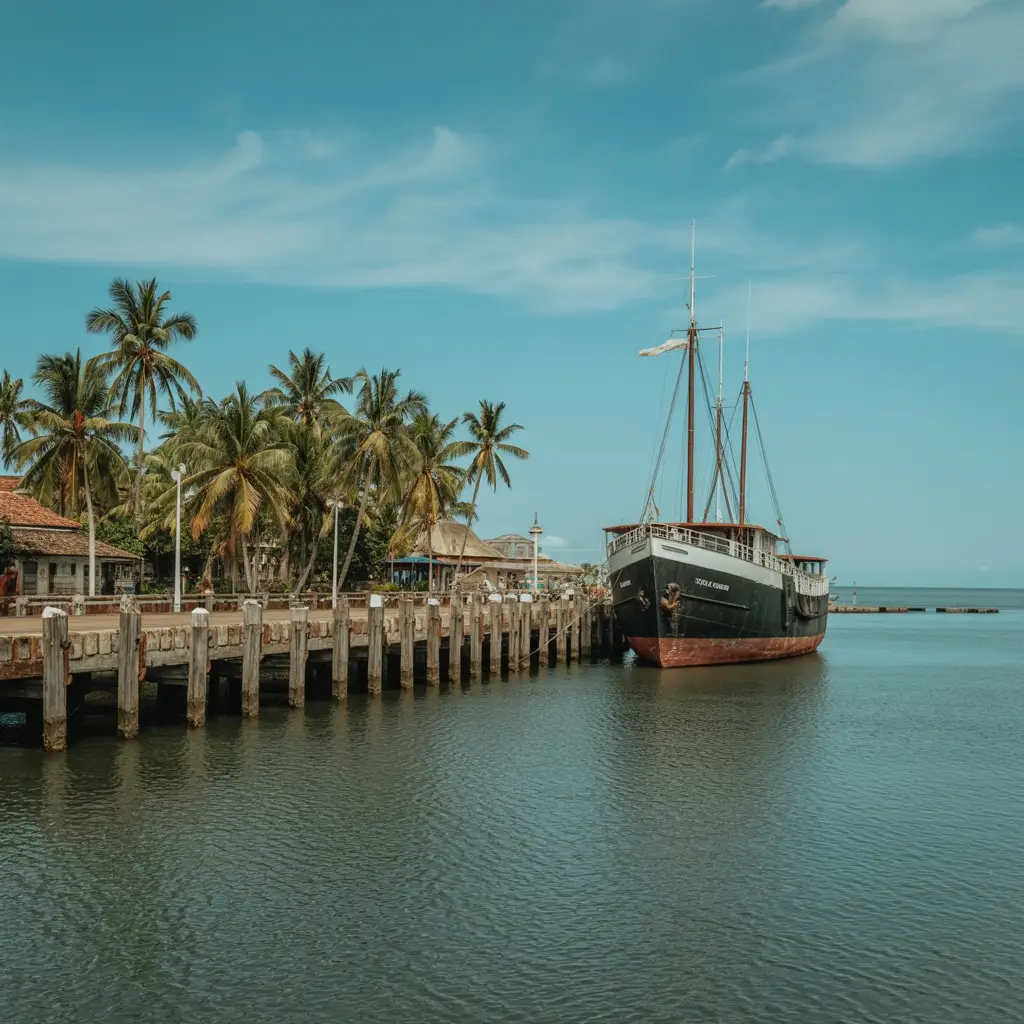
Since Vasco da Gama first anchored his ships in Inhambane Bay during 1498, this natural harbor has witnessed over five centuries of maritime history that shaped southern Mozambique’s cultural identity.
You’ll uncover Arab traders used this port centuries before Portuguese arrival, evidenced by traditional dhow designs still visible today.
The Portuguese established a formal trading post in 1727, transforming Inhambane into Mozambique’s third-largest port by the 18th century.
You’ll see remnants of this golden age in the neo-classical Cathedral built during the 1780s and the Portuguese customs house that now welcomes modern cruise ships.
Frequently Asked Questions
What Currency Is Accepted at Local Vendors Near Inhambane Port?
You’ll need Mozambican Metical (MZN) for local vendors near the port. They don’t accept USD or EUR. Cash dominates all transactions at markets, street stalls, and small businesses in the area.
Are There ATMS Available Within Walking Distance of the Cruise Terminal?
You’ll likely need transportation to reach ATMs from the cruise terminal. The nearest confirmed ATMs are 2-3km away at a BCI petrol station, while Absa ATMs require short drives within Inhambane.
What Vaccinations Are Recommended Before Visiting Inhambane?
You’ll need routine vaccinations like MMR and tetanus, plus hepatitis A and B, typhoid, and yellow fever. Consider rabies vaccination if you’ll encounter animals. Malaria prophylaxis is essential since Inhambane’s in a high-risk area.
Is Wi-Fi Available for Passengers at the Cruise Port?
You won’t find public Wi-Fi at Pomene Cruise Port. You’ll need to rely on your MSC ship’s paid Wi-Fi packages or use private transfer vehicles that offer connectivity during transport.
What Is the Local Tipping Etiquette in Inhambane?
You’ll find 10-15% restaurant tips are standard in Inhambane. For local services, tip 100-300 MZN or round up taxi fares. Use cash in Meticais or US dollars, and tip discreetly given local economic conditions.
Thinking about something different? Check out the cruises leaving from Quelimane Cruise Ship Port.
